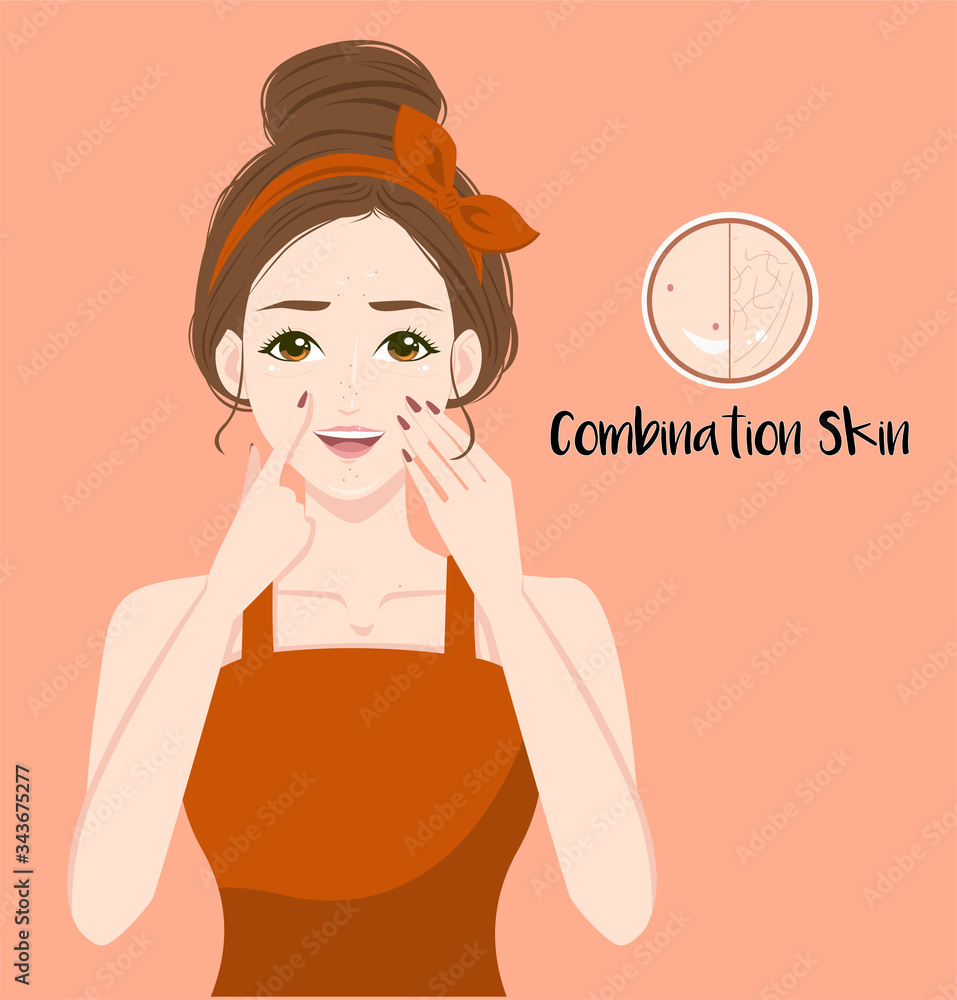How to do skincare routine for combination skin?
Combination skin can be challenging to manage. What should you do if your skin type falls anywhere in the centre of dry or oily skin? Many of the skincare products on the market are made for either dry or oily skin. Turning to us is the easiest solution. Learn more about mixture skin in the sections that follow, including what it is, how to identify it, and how to create a skincare routine that can address both dryness and oiliness simultaneously. Read on to learn about how to do skincare routine for combination skin.
How does combination skin work?
Dry skin and oily skin are the two primary skin types, and combination skin combines characteristics of both. The face will have oily spots in some areas and dry patches in others. Typically, the cheeks stay dry while the t-zone, or the area across the forehead and down the nose, produces excessive oil.
What Leads to Combination Skin?
Combination skin has several “causes,” not just one, which is why there is no single “cause” for this skin type. Age, lifestyle decisions, hormone swings, and the seasons will all have an effect, while genetics may be the most important factor.
Dry skin symptoms
- Scaly skin
- Tight-feeling skin
- Roughness
- Redness
Oily Skin Symptoms
- Greasy skin that is shiny-looking
- Substantial pores
- Acne outbreaks
How to Choose the Best Skincare Products for Combination Skin
It might be challenging to find the proper products for combination skin. You need a product with non-comedogenic hydrating elements if you intend to use it all over your face. They won’t cause clogged pores or breakouts, so they’ll keep your skin hydrated.
You could, however, also utilize items made expressly for dryness or oiliness. You must, however, be careful to only use the products intended to address dryness on your dry skin, while only using the products intended to address excess oil and prevent acne on your oily skin.
The Most Effective Skincare Routine for Combination Skin
Ideally, you should modify your skin care regimen based on the requirements of your skin. Even if you could have combination skin, it’s possible that you also have wrinkles, dark spots, or sensitivities, so the products you use should be able to address these problems as well.
Here is a simple skincare regimen for combination skin to get you started. Then, you can tweak these procedures along with the precise items you employ to make sure that they effectively address each of your skin issues.
Use a gentle cleanser first
For every skin type, a quality facial cleanser is a necessity. In addition to a washing lotion, cream cleansers are excellent for moisturizing the skin. Although foamy cleansers are frequently used to cope with excessive oil production, this won’t help your dry patches since they are known to dry up the skin’s natural barrier.
Use a toner
Your skin care routine should then include an alcohol-free toner. A toner will not only remove any residue that your cleanser may have left behind, but it will also restore the pH balance of your skin, which most cleansers tend to alter. Because balanced skin is much less prone to dry out or create excessive oil, combo skin is less of a bother. This is why a toner is so important.
Exfoliate dead skin
It’s time to detoxify right now. There are two alternatives available to you: chemical exfoliants, which are typically based on acids or enzymes, or physical exfoliants, like a scrub. Although a simple scrub may seem less frightening, chemical exfoliants are much milder. The ideal acid to use on combination skin is lactic acid since it effectively removes dead skin cells while also acting as a humectant, which hydrates the skin and fortifies the skin barrier.
One thing to keep in mind is that the dry skin on your face, which could develop sensitivities if you exfoliate too much, will likely need to be exfoliated less frequently than the oily sections of your body. Therefore, even though you might only need to exfoliate your dry parts once per week, feel free to focus your exfoliant on your oily patches every two to three days.
Apply a Serum in small amounts
Although there are various serums available, one with vitamin C should always be your first choice. All skin types should include this component because it will address uneven skin tone, anti-aging, and overall skin health. Apply this to all of the dry and oily parts of your face.
Given that retinol is a potent multi-tasker, using a retinol serum would also be an excellent idea. It aids in promoting the skin’s natural exfoliation, which results in fewer clogged pores. Additionally, retinol serum will counteract skin ageing and lighten any dark spots.
Utilize eye cream
The skin around your eyes is typically one of the first places to acquire lines and wrinkles since it is thinner and more fragile than any other skin on your face or body. If you truly don’t want to add a step to your skincare regimen, you can skip this one if the moisturizer you use is okay to apply around your eyes as well.
Moisturize
If you have combination skin, finding the right moisturizer might be challenging. Many are just too thick for places that produce excess oil, while lighter formulations will drench dry skin. Hyaluronic acid is one element that does function well; it attracts moisture to the skin without clogging it, giving your skin cells an instant appearance of plumpness and fullness.
Green tea is an additional healthy element to seek for. It functions particularly well when paired with hyaluronic acid, not only for aging-related issues but also for lowering oil production.
Use two moisturizers on your face as an alternative. For oily spots, use a mild, oil-free solution; for dry patches, use a thick moisturizer. Moisturizing is a step that shouldn’t be skipped in either case. You should moisturize even on days when your skin feels oily and heavy. After all, water is what your cells require to function properly, whereas oil is very different from water.
Remember to use SPF
UV rays not only cause irreversible damage to skin cells and increase the risk of skin cancer, but they also encourage the skin to produce more oil, which is something you definitely don’t want in your t-zone. The ideal sunscreen would be one made of minerals and formulated with at least SPF 30. Even in the cold, don’t forget to reapply sunscreen every two to three hours.
Face masks every week
Although this procedure is not necessary, your skin will appreciate it. Face masks typically include higher concentrations of active ingredients than treatments intended for everyday use. They are therefore useful for providing your skin with a thorough treatment. Additionally, selecting a face mask is made simple by the fact that there are masks for every skin type.
Once more, search for a moisturising, non-comedogenic solution that will address any particular skin issues you might have. For happy and healthy skin, use it once a week, or even twice a week.
Summary
You always have the choice to simply treat the dry and oily regions individually if you have trouble finding products that can be utilised on both types of skin. Whatever path you choose, don’t be hesitant to try out the aforementioned skin care routine. while it may sound scary, this is the only way to figure out what works (and what doesn’t) for your skin’s particular demands.





